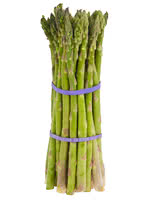Mon-Fri 9am - 5pm Mountain time
Mary Washington Asparagus vs Nodding Onion
Allium cernuum
Asparagus officinalis Mary Washington
NOT AVAILABLE THIS SEASON - MIGHT RETURN
NOT AVAILABLE THIS SEASON - MIGHT RETURN
Nodding Onion is a native perennial wildflower known for its nodding clusters of flowers that range in color from white to pink to purple. The lightly scented blooms provide pollen and nectar for pollinators, especially bees, which can collect while hanging upside down, a capability most other insects lack.
The narrow, grass-like leaves of the Nodding Onion can be used as a seasoning in cooked dishes, though bulbs and raw leaves should not be eaten in large quantities. All parts of the plant have an onion-like aroma when bruised, which helps deter deer and rabbits. They can self-seed readily, so removing spent blooms helps manage their spread. Tolerant of a range of soils, including alkaline, it is well-suited for a variety of plantings, including pollinator gardens and naturalization projects.
The Mary Washington Asparagus is a perennial vegetable that produces edible shoots or spears that may be harvested in April-May. This plant is an heirloom which produces large green stalks that can be harvested earlier than other asparagus cultivars, and the spears feature a crisp, nutty flavor. There are male and female plants, and the females can grow into towering ferns after going to seed for the year.
The Mary Washington Asparagus gets its name from the mother of George Washington, who was married to the plant breeder Augustine Washington. For a more reliable asparagus crop, it is recommended that you don’t harvest in the first year and allow it to establish its root systems.
Nodding Onion Quick Facts
Mary Washington Asparagus Quick Facts
Toxicity: raw leaves and bulbs can be midly toxic

